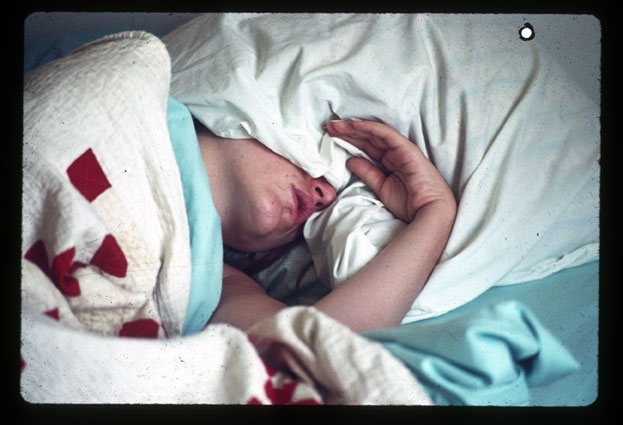The day after Adam Chodzko’s exhibition opened, Super Typhoon Haiyan made landfall over the Philippines. It’s an event that Chodzko couldn’t have predicted, but one that can’t help but seep into the background context to this show. The Laarni of the title is an image moderator – located in Makati City, near the Philippine capital, Manila – who monitors online images, mainly on UK social-networking sites, and reports unsuitable content.
We know this only from a ten-minute video showing a typed Skype-chat between Laarni and a stranger who goes by the name of Everyday Billions (EB). It’s a slightly flirtatious exchange, in which EB questions Laarni about her job and how she feels about it. Anything else we may think about Laarni is speculation.
Elsewhere in the gallery Chodzko presents seemingly disparate collections of imagery that, through his selection and editing process, he has ‘moderated’, including a series of photographs printed from dirt-speckled found 35mm slides, showing the aftermath of storm damage (Haiyan comes to mind again here); a series of photographs printed from a collection of found slides of individual people sleeping – in beds, on sofas, drunk on the street, etc – and a series of international circus posters featuring clowns, pasted onto the gallery’s back window.
Another poster, for Fortuna cigarettes, showing carefree young people cavorting in the sea, is displayed flat on a low plinth and overprinted with what reads like one of R.D. Laing’s knot texts, which highlight the confused and angst-ridden nature of human relationships. On top of that sits a tiny tub of seeds from the highly toxic belladonna plant, also known as deadly nightshade.
Placing as much emphasis on the work’s political content as the medium chosen to convey it, Chodzko’s multilayering of the images we imagine Laarni is looking at with the printed images in the gallery, along with the relationship implied in the video, is a complex, nuanced and socially engaged combination of fact and fiction.
And you’d expect this from Chodzko, who is, after all, an experienced hand at both finding and forging connections between ordinary objects, people and images, in order to give an idea a physical existence: from his 1990s small ad seeking images of ‘God lookalikes’ to the video The Pickers (2009), for which he engaged Romanian migrant fruit pickers to edit a film archive about British migrant hop pickers.
Although Laarni isn’t an actual person, she could be. Everyday Billions doesn’t exist either, but as the name suggests, he or she could be any one of us, the billions who surf and engage online, taking for granted the easy access to information, and to human contact, while probably giving far less thought to the fact that we’re surrendering control over the information we receive, and creating relationships with unknown individuals thousands of miles away, who may not even exist. Perhaps even more troubling is that I can know this and yet still not stop myself wondering if Laarni might have any relatives affected by Haiyan.
This article was first published in the January & February 2014 issue.
